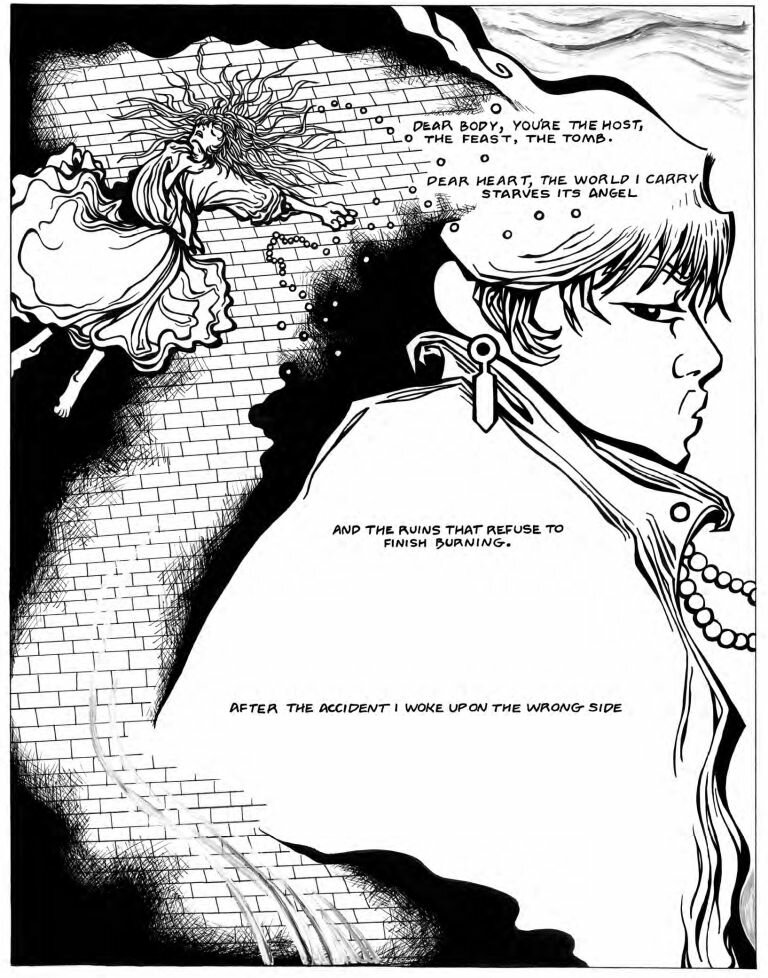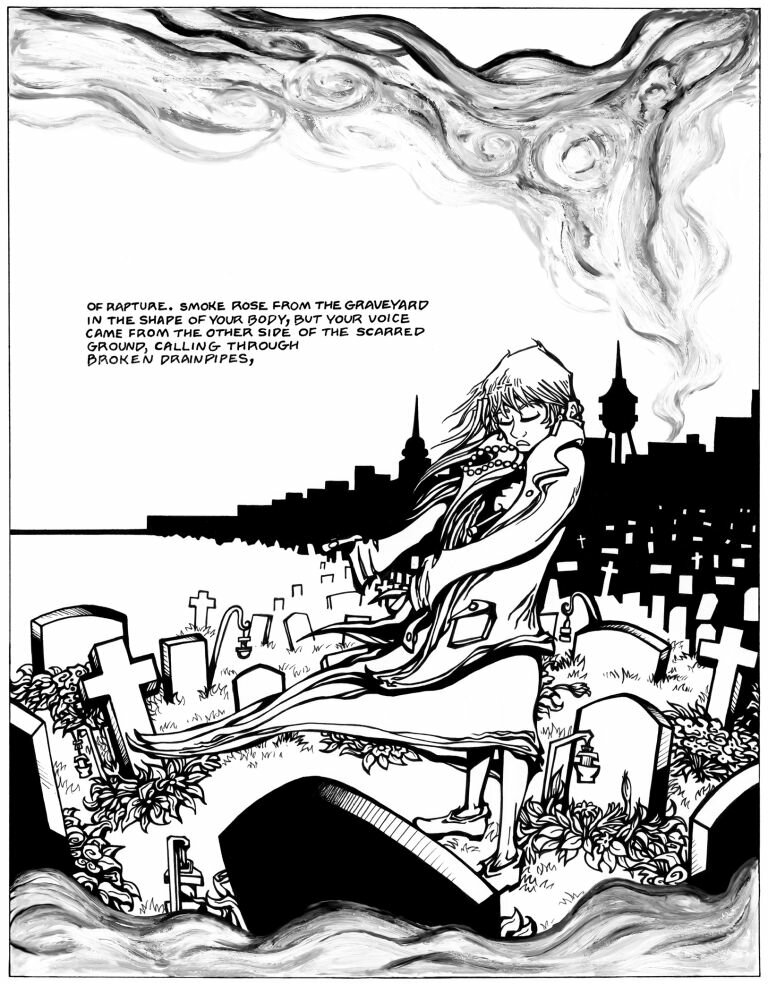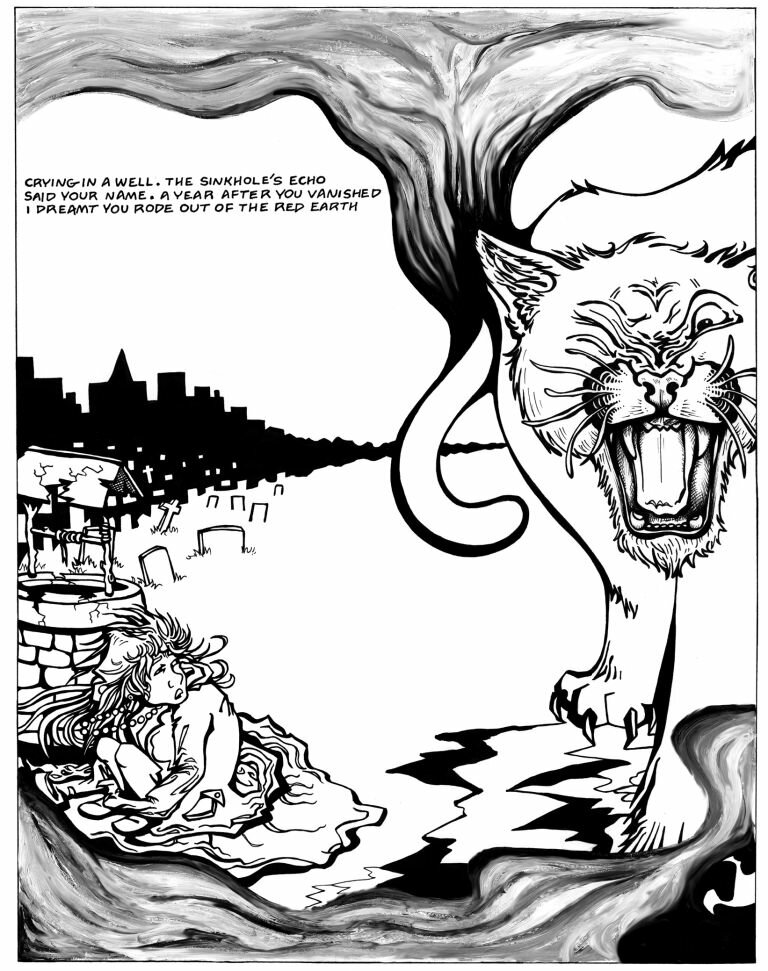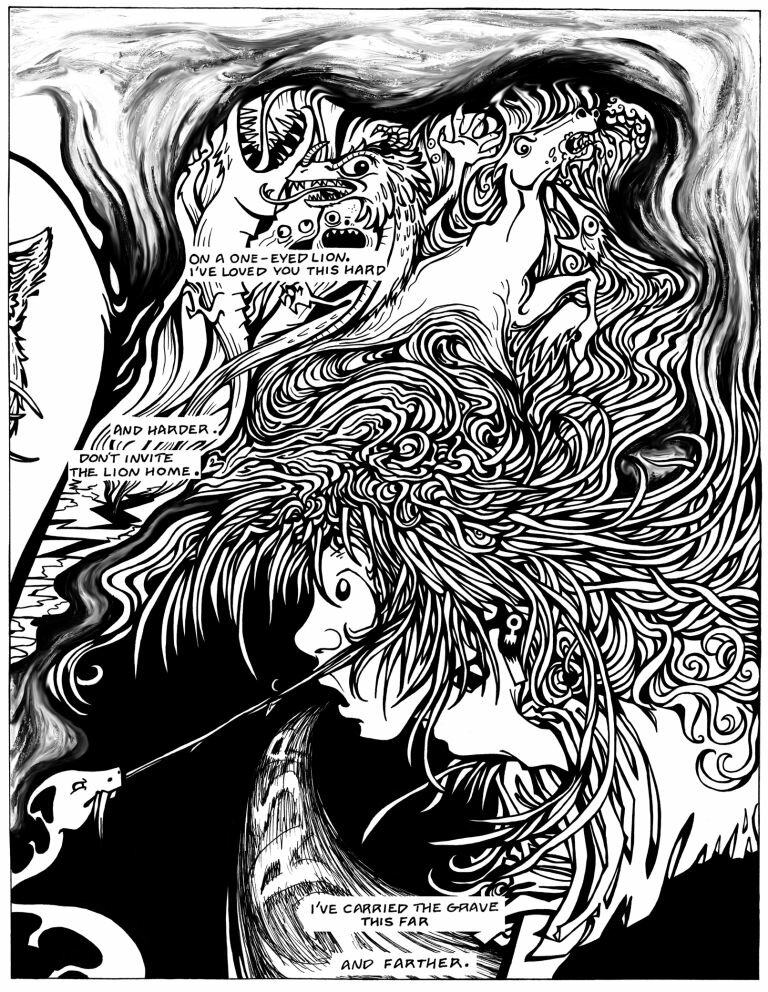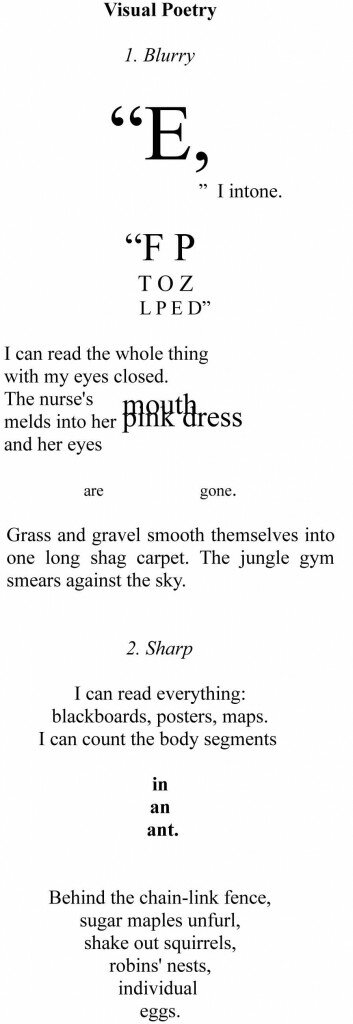1.
So what are some other major facets of Ashbery’s relationship to American pragmatism? How would we characterize pragmatism, and in what ways does Ashbery’s work suggest our characterization? Does Ashbery ever explicitly mention James, Dewey, or Rorty? (I know of only one place currently where Rorty mentions Ashbery; it is in his introduction to Essays on Heidegger and Others, where he writes, “I have given up on the attempt to find something common to Michal Graves’s buildings, Pynchon and Rushdie’s novels, Ashbery’s poems, various sorts of popular music, and the writings of Heidegger and Derrida.” (Rorty, 1)
Ashbery does explicitly mention James, in a poem called, appropriately, “My Philosophy of Life.” The passage in question reads,
But then you remember something William James
wrote in some book of his you never read–it was fine, it had the fineness,
the powder of life dusted over it, by chance, of course, yet still looking
for evidence of fingerprints. Someone had handled it
even before he formulated it, though the thought was his and his alone. (www.poets.org)
It is difficult to read this passage in the context of pragmatism without wondering if the “Someone” in the second-to-last line in the excerpt is Ashbery. Notice the exquisite intimacy with which this “Someone” shares in the “something William James / wrote”: this “Someone” has felt, innately, what James has said, even before James formulated it. Furthermore, the “you” in the first line of the excerpt remembers something James wrote, even though he or she never read it. We can be forgiven, then, if we go one to suggest a relationship between James and the “Someone” in the passage that borders on telepathic, it is so close and “intuitive.”
2.
In “Pragmatism, Relativism, and Irrationalism,” Rorty offers three characterizations of what he calls the “central doctrine” of pragmatism:
My first characterization of pragmatism is that it is simply anti-essentialism applied to notions like “truth,” “knowledge,” “language,” “morality,” and similar objects of philosophical theorizing.” (Voparil and Bernstein, 112)
So a second characterization of pragmatism might go like this: there is no epistemological difference between truth about what ought to be and truth about what is, nor any metaphysical difference between facts and values, nor any methodological difference between morality and science. (Voparil and Bernstein, 113)
“Let me sum up by offering a third and final characterization of pragmatism: it is the doctrine that there are no constraints on inquiry save conversational ones […] To accept the contingency of starting-points is to accept our inheritance from, and our conversation with, our fellow-humans as our only source of guidance. “ (Voparil and Bernstein, 115)
3.
The first characterization is essentially pointing towards a vigilant awareness regarding the pitfalls (and pratfalls) of holding too tightly onto abstract concepts. “Anti-essentialism” means that there is no central essence to ideas like “truth,” “knowledge,” and “morality” – that these are contingent notions that depend entirely on our position within history, (as opposed to a neutral, extra-historical position). It is a pluralistic notion that echoes Ashbery’s opening question in “The One Thing That Can Save America,” “Is anything central?” And it also is a rallying call for embracing what Keats called “negative capability,” or the ability to embrace ambiguity, the messiness of life, as opposed to running from it and trying to escape through, among other things, empty abstractions like “truth” and “language.”
4.
A short poem by Ashbery, chosen at random, might help illustrate our point. Here is the entire “Rain Moving In,” from A Wave:
The blackboard is erased in the attic
And the wind turns up the light of the stars,
Sinewy now. Someone will find out, someone will know.
And if somewhere on this great planet
The truth is discovered, a patch of it, dried, glazed by the sun,
It will just hang on, in its own infamy, humility. No one
Will be better for it, but things can’t get any worse.
Just keep playing, mastering as you do the step
Into disorder this one meant. Don’t you see
It’s all we can do? Meanwhile, great fires
Arise, as of haystacks aflame. The dial has been set
And that’s ominous, but all your graciousness in living
Conspires with it, now that this is our home:
A place to be from, and have people ask about. (Ashbery, 733)
For starters, we must call attention to the fantastically innovative images that begin the poem.
A blackboard being erased in an attic might sound silly to some – it is somewhat silly, because so odd – and yet its silliness, its oddness, is subsumed, or somehow augmented sublimely, by its strange connotative power, suggestive of new starts, or past thoughts “erased” to allow the new in. This confluence of the image of a blackboard with the notion of thoughts changing, or being “erased,” is made more vivid by the location of the blackboard in an attic, a space which is itself a pungent, full and rich metaphor, like a basement, for the unconscious, where we keep everything we’d forgotten. The power of these combined suggestions is, I believe, what Rorty means by imaginative vision – he is speaking of an ability to question outworn suppositions we have formed over time about what a poem, say, should be like – what kinds of images it should contain, how it should develop, what it should be about, what it should do. These presuppositions are questioned by the very fact of the Ashberian poem’s existence. In reading it, we find ourselves not only reading this poem, but, in a Bloomian manner, reading every poem and every image we’ve ever encountered, along with the expectations this history of reading has constructed over time – and, because of the radical strangeness of the Ashbery poem, revising that entire history of expectations.
5.
(Perhaps this is why Ashbery is so often described as a difficult, puzzling, or just plain odd poet: like a powerfully successful Dadaist, or a good artist, he is constantly pushing, poking, nudging, or exploding the boundary line we contain in our minds between what separates our expectations for comfortable, possibly complacent normalcy and our desire and hope for grand and original innovation. This is why, once we read Ashbery, we can never read or think about poetry in the same way again. For in questioning our presuppositions about literature,
Ashbery questions our presuppositions about why we read and write in the first place.
He helps us to imagine, through the expansiveness and expressiveness of his thought, outside our worn imaginations; in doing so, he galvanizes or kick-starts our tired imaginations, our complacency, our unwillingness to budge or change. Ashbery’s poems force us to reflect upon the difference between invoking the abstraction “morality,” versus thinking about what this word means, individually and idiosyncratically, for us, within our own behavior, thoughts, feelings and actions. It’s the difference between such an invocation and an encounter with an actual person – which is to say, completely unprecedented, with very few rules or signposts to follow aside from our own idiosyncratic imaginative makeup.)
6.
Second characterization: What does it mean to say that there is no difference between facts and values, should and is, morality and science? How does Ashbery’s poetry allude to or bring this notion into articulation through its own flexible and fluid network of vocabularies?
Perhaps we can take my Corliss Williamson jersey as an example. Was it a fact or a value that the jersey, being red and white, and with the word “Arkansas” written on its front, represented to me the college team on which Williamson played – and therefore ignited within me the desire to buy and wear the jersey, because I was so fond of that player on that team? I suppose you could get away with saying that the letters and colors are chunks of objective “facts” about the jersey, and my desire for those “facts” signifies my subjective valuing of those facts, but this just sounds hopelessly entangled, too complicated, obvious, redundant, maddeningly rigid, and uninteresting, and furthermore suggests a central core of my person on one hand (my values), and reality on the other hand (the red and white of the jersey) that somehow meet and lock and cohere together.
But isn’t this what Lauterbach is saying that Ashbery doesn’t do? And is this actually experientally what happens?
7.
Here’s Rorty again, from Contingency, Irony, and Solidarity:
On the view of philosophy which I am offering, philosophers should not be asked for arguments against, for example, the correspondence theory of truth or the idea of the “intrinsic nature of reality.” […] Interesting philosophy is rarely an examination of the pros and cons of a thesis. Usually it is, implicitly or explicitly, a contest between an entrenched vocabulary which has become a nuisance and a half-formed new vocabulary which vaguely promises great things. […] The latter “method” of philosophy is the same as the “method” of utopian politics or revolutionary science (as opposed to parliamentary politics, or normal science). The method is to redescribe lots and lots of things in new ways, until you have created a pattern of linguistic behavior which will tempt the rising generation to adopt it, thereby causing them to look for appropriate new forms of nonlinguistic behavior, for example, the adoption of new scientific equipment or new social institutions. This sort of philosophy does not work piece by piece, analyzing concept after concept, or testing thesis after thesis. Rather, it works holistically and pragmatically. (Rorty, 8 – 9)
Rorty is saying that to discuss my experience desiring the Williamson jersey through the notion of facts versus values is to use a vocabulary that does not help me explain what I am trying to explain. It is an inadequate tool for what I want to do. As he might say, no one really cares if my values met my facts at the moment I saw that jersey – that somehow some truth about me met some truth in the world. This sounds hopelessly weird and non-useful. What people do care is how my desire for that jersey matches up with who I was as a kid – my self-image then. If I would have bought the jersey and worn it in the mall – and if the jersey would have then incited curiosity in another person, this person would not have thought about my wearing the jersey in terms of facts versus values, chunks of reality versus other chunks. They would have possibly wondered, “who is that white, overweight kid?” They would not have wondered, “what is the relationship between that kid’s values and the facts of him wearing that jersey?”
8.
How does Ashbery achieve his GREAT THEME, the changing of one’s self-image? Through redescribing “lots and lots of things in new ways.” (A change in clothes, a redescription, leads to a change in self-image.)
9.
Now imagine that, that day, my parents did decide to buy me the jersey. Not only that, but I wore it that day in the mall, and my father took a picture of me wearing it. Now imagine that, after twenty years pass, I find that picture and wish to say something interesting and helpful, philosophically, about it. Would it be more helpful to
- read a description in which I attempted to cover the photograph inch by inch and describe every single thing I see across the gridwork of the picture, aiming for a kind of miniature totality?
- read a description in which I redescribe the picture, noticing new things about it, and in noticing new things about, recreating (as opposed to attempting to copy) the picture?
- look at both descriptions, and view them as alternative descriptions, two out of many, as opposed to searching for one way that is more right, because it corresponds more with reality?
10.
Our third option, the pluralistic and pragmatist notion of alternative ways of looking at a situation, as opposed to one way over another, is as endemic to Ashbery’s poetry as it is to Wallace Stevens’ poetry-philosophy and William James’s philosophy-poetry. It explains why there is no difference between morality and science. Because as soon as we posit a difference, we are splitting reality up into chunks again, and pretending that we are the kinds of beings that can know whether or not our scientific descriptions of the world more correspond with “the way things are” than our poetic descriptions. We can’t know that, which explains the value of pragmatist and pluralistic thought.
11.
For another useful illustration of this pragmatist notion of the precedence of self-image, or temperament, over the rightness or wrongness of theses, here is another entire Ashbery poem, called “Drunken Americans,” from Houseboat Days.
I saw the reflection in the mirror
And it doesn’t count, or not enough
To make a difference, fabricating itself
Out of the old, average light of a college town,
And afterwards, when the bus trip
Has depleted my pocket of its few pennies
He was seen arguing behind steamed glass,
With an invisible proprietor. What if you can’t own
This one either? For it seems that all
Moments are like this: thin, unsatisfactory
As gruel, worn away more each time you return to them.
Until one day you rip the canvas from its frame
And take it home with you. You think the god-given
Assertiveness in you has triumphed
Over the stingy scenario: these objects as real as meat,
As tears. We are all soiled with this desire, at the last moment, the last.
What if we were to read this poem as a chronicling of the way in which the poet tries on various self-images, various jerseys? And during that process, attempts to figure out which jersey is “really him,” only to abandon that project? The poem begins with the poet seeing a reflection in the mirror (there’s that pregnant Ashberian vagueness), but we can assume here that the reflection is his own. Ashbery questions this reflection, for he knows a more accurate record of his various self-images would be a hall of mirrors, as opposed to one mirror. We are then given a second description, perhaps of the poet, perhaps of the poet somehow seen by someone else, perhaps of someone else, and here the image bears a strange resemblance to the earlier image of a face in the mirror, only here we have a man “seen arguing behind steamed glass, / With an invisible proprietor.” The static notion of a mirror reflecting has been replaced with a more suggestively vague image of a man behind a window, arguing “with an invisible proprietor.” This seems to be a re-description of the earlier image, where Ashbery also argued “with an invisible proprietor,” though there the proprietor is a metaphor for Ashbery’s reflection of himself in the mirror. Finally we have a third image of the poet ripping canvas from the frame. In a way, each successive image in our sequence of characterizations of thoughts about self-image has become richer, more pregnant with suggestion – we move from a mirror reflection, to someone arguing behind a window, to a painting, but the argument is always the same – “that’s not me, that couldn’t be me! I contain multitudes! I am voluminous, prodigious, prolific! One image of me could never work as a replacement for the polysemous me!”
And yet, characteristic of Ashbery, he leaves the nature of that desire in the final line utterly ambiguous. Is it the desire for personalities less like Heraclitus’s river, and with more of the stability of objects like “meat” and “tears”? If so, it’s an understandable desire, (it goes with us until “the last moment,” our deaths), but an impossible (“soiled”) one.
12.
We might think of Rorty’s third characterization of American pragmatism – “there are no constraints on inquiry save conversational ones […]” – as the humanist cloak that covers, or the humanist air that permeates, his two earlier characterizations. For to say that there are no constraints on inquiry is to appeal to a finite humanity whose possibilities are still undreamed of. In a sense, it is also an appeal to and for solidarity, as there is no escaping, according to this maxim, the human community, which is the final arbiter, as opposed to God or any neutral starting-point. All our talk about redescription and self-image are contingent upon this notion, for there is no redescription or self-image without the human community to provide us with walls for bouncing off our redescriptions and self-images. Perhaps this is why Ashbery’s poetics provide us with such a polysemous chorus of voices – such poems indirectly suggest the richness of human attitudes, stances, temperaments, while refusing to gesture towards something outside these attitudes. All of which is to say, that although we seem to often want to apotheosize Ashbery, Ashbery has apotheosized nothing.
13.
I took the first part of the title of this piece from Ashbery’s “Fragment,” and I’d like to end with another excerpt from that poem. The excerpt is yet another intimate reading of how we read the world and ourselves; it is also, in its final lines, an appeal to a kind of idiosyncratic solidarity, in a mode of poetics that is utterly Ashberian.
The part in which you read about yourself
Grew out of this. Your interpretation is
Extremely bitter and can serve no profitable end
Except continual development. Best to break off
All further choice. In
This way new symptoms of interest having a
Common source could produce their own ingenious
Way of watering into the past with its religious
Messages and burials. Out of this cold collapse
A warm and near unpolished entity could begin. (Ashbery, 230 – 231)
That “warm and near unpolished entity” is the “new being” we are aided to become through the “power of imagination.” Through the collapse of old ways of imagining, old vocabularies, old metaphors, old self-images – “the past with its religious / Messages and burials” – we find ourselves continuously facing “the first day / of the new experience,” helped by Ashbery’s astonishing redescriptions.
Books Used for this Essay
Ashbery, John, Collected Poems, 1956 – 1987, New York, Library of America, 2008.
James, William, The Principles of Psychology, Volume One, New York, Dover Publications, 1950.
James, William, A Pluralistic Universe, Lincoln, University of Nebraska Press, 1996.
Rorty, Richard, Contingency, Irony, and Solidarity, New York, Cambridge University Press, 2009.
Rorty, Richard, Essays on Heidegger and Others: Philosophical Papers Volume 2, New York, Cambridge University Press, 1991.
Chrisotpher Voparil and Richard Bernstein (ed.), The Rorty Reader, Malden, Blackwell Publishing Ltd., 2010.





